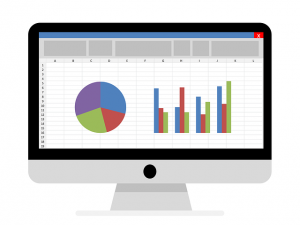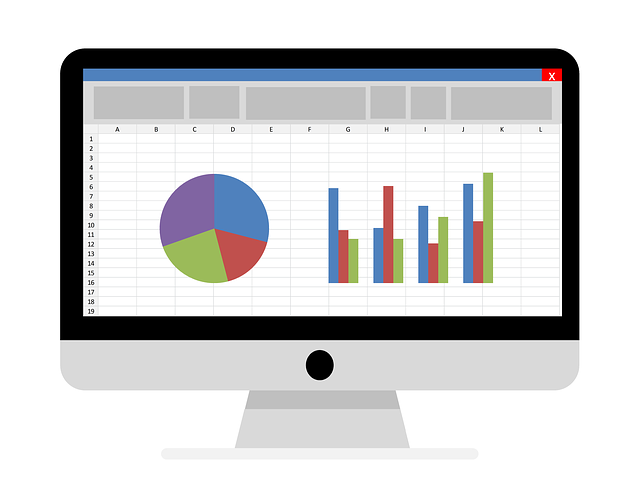A cash budget is used internally by management to estimate cash inflows (receipts) and outflows (disbursements) of cash during a period and the cash balance at the end of a period. In other words, a cash budget is a plan for an organization to obtain and use resources over a specific period of time. This means an organization must have an idea of where their money is coming from and how it should be spent.
Note: A cash budget includes cash only. Do not include discounts received or allowed, credit purchases or sales, bad debts, depreciation, or any other non-cash items!
Use of Cash Budgets
 Cash budgeting allows an organization to set a goal and move toward that goal. This is important because each organization has a finite amount of resources and these resources need to be used effectively. Management uses cash budgeting to manage the cash flows of an organization. For example, employees must be paid every two weeks. The cash budget allows management to forecast whether or not they will have enough cash to pay their employees. If there are shortfalls of cash, the budget may be adjusted to correct problems before payments are due.
Cash budgeting allows an organization to set a goal and move toward that goal. This is important because each organization has a finite amount of resources and these resources need to be used effectively. Management uses cash budgeting to manage the cash flows of an organization. For example, employees must be paid every two weeks. The cash budget allows management to forecast whether or not they will have enough cash to pay their employees. If there are shortfalls of cash, the budget may be adjusted to correct problems before payments are due.
Similarly, the cash budget allows management to predict having large amounts of free cash on-hand. Having plenty of cash is great – however, a surplus of cash is often better used to expand and develop areas of an organization. Whether it is a shortfall or surplus, a cash budget is used to allocate cash in the most effective way possible across an organization.
Coping with Uncertainty
Since a cash budget is based on estimates, it is limited to represent expected values. Uncertainty in cash budgets is due to the uncertainty of ending cash values. To deal with uncertainty, there are two main techniques an organization can use:
- Sensitivity analysis. This involves examining how different values of an independent variable impact other dependent variables. This technique gives management insight of the expected cash flows if changes to certain variables occur.
- Short-term financing. A company should be certain that it has access to lending at reasonable costs to cover cash shortages.
Preparing a Cash Budget
There are three key pieces to consider when creating a cash budget:
- Time period (what time period does this budget cover? 3 months? 6 months?)
- Cash position (how much cash would you like to have readily available?)
- Sales and expenses (what are your projected sales and expenses?)
It is important to know that a cash budget is created as part of a master budget. The cash budget adds cash receipts and subtracts cash payments. Ideally, the cash budget should have a positive cash projection – this means the company is expecting to have enough cash to make it through the period.
Format of Cash Budget
Beginning cash balance
Add: Cash receipts
Less: Cash disbursements
= Excess/shortage of cash
+/- Financing
= Ending cash balance
Budget: Estimate Cash Receipts
Due to accrual basis accounting, sales revenue is not the same as a cash inflow. Sales revenue is recorded when it is earned. Since some customers make purchases on account (on “credit”), cash is often received at a later accounting period. To remedy this, companies estimate the amount of revenue that will be paid (in cash) in the month of sale.
Johnson Company’s sales are 35% cash and 65% credit. Based on previous records, Johnson Company expects to collect credit sales as follows:
|
Month of sale |
1st month after sale | 2nd month after sale |
Uncollectible |
|
45% |
25% | 20% |
10% |
Johnson Company had sales in January, February, and March 2018 were:
March (projected): $60,000
February: $55,000
January: $50,000
Prepare the cash receipts budget for March.
Step 1: Calculate cash expected from March sales
Expected cash percent of sales x Total Sales Expected March = Expected Cash
35% x $60,000 = $21,000
Step 2: Calculate cash expected from March credit sales
Expected Credit percent of sales x Total Sales Expected March x Expected Percent that those credits will be collected in March = Expected Cash from Settled Credit (Mar)
65% x $60,000 x 45% = $17,550
Step 3: Calculate cash expected from February credit sales
Credit Percentage of Sales x Total Sales from February x Expected Percent of that credit that will be collected in March = Expected Cash from Settled Credit (Feb)
65% x $55,000 x 25% = $8,938
Step 4: Calculate cash expected from January credit sales
Credit Percentage of Sales x Total Sales from January x Expected Percent of that credit that will be collected in March = Expected Cash from Settled Credit (Jan)
65% x $50,000 x 20% = $6,500
| Johnson Company | |||
| Cash Receipts Budget | |||
| Month Ending March 31, 2018 | |||
| Budgeted collections from March sales: | |||
| Cash sales ( 35% x $60,000) | $ 21,000 | ||
| Credit sales (65% x $60,000 x 45%) | $ 17,550 | ||
| Budgeted collections from February sales: | |||
| Credit sales (65% x $55,000 x 25%) | $ 8,938 | ||
| Budgeted collections from January sales: | |||
| Credit sales (65% x $50,000 x 20%) | $ 6,500 | ||
| Budgeted cash collections during March | $ 53,988 | ||
Budget: Estimate Cash Disbursements
Due to accrual basis accounting, expenses incurred are not the same as cash outflows. Companies often make purchases on account and these expenditures will not be paid until a later period. As with the previous example, companies will estimate the portion of expenditures that will be paid that month and in following months.
Johnson Company purchases inventory on account, pays for 40% in the same month purchased and 60% the following month. Johnson Company’s purchases are:
|
February Purchases |
March Purchases |
| $40,000 |
$30,000 |
Johnson Company had the following additional costs in February:
- Depreciation expense: $4,200
- Cash dividends declared: $5,300
- Loan repayments: $2,200/mo.
- Monthly operating costs: $10,000
Johnson Company pays 70% of cash operating costs in the month incurred and the remaining 30% the following month. Prepare a cash disbursements budget for March 2018.
Step 1: Calculate Cash to be paid for March purchases
Percent of March inventory cost paid this month x Inventory purchased this month = Cash paid for March Purchases
40% x $30,000 = $12,000
Step 2: Calculate Cash to be paid for February purchases:
Percent of February inventory cost paid this month x Inventory purchased in February = Cash paid for February Purchases
60% x $40,000 = $24,000
Step 3: Calculate Cash to be paid for March operating costs
Percent of operating costs paid in current month x March operating cost = Cash paid in March for March Operations
70% x $10,000 = $7,000
Step 4: Calculate Cash to be paid for February operating costs:
Percent of Operating Costs Paid Month After Incurred x February operating cost = Cash paid in March for February Operations
30% x $10,000 = $3,000
| Johnson Company | |||
| Cash Disbursements Budget | |||
| Month Ending March 31, 2018 | |||
| Budgeted cash to be paid for: | |||
| March purchases (40% x $30,000) | $ 12,000 | ||
| February purchases (60% x $40,000) | $ 24,000 | ||
| March operating costs | $ 7,000 | ||
| February operating costs | $ 3,000 | ||
| Loan repayment | $ 2,200 | ||
| Cash dividends | $ 5,300 | ||
| Budgeted cash disbursements during March | $ 53,500 | ||
Remember, depreciation expense is not included in the cash disbursements budget because depreciation is a non-cash item.
Summary of Cash Budget
The February 28 cash balance is $4,500 for Johnson Company. Johnson Company must maintain a minimum cash balance of $10,000. If under $10,000, Johnson must make up for this cash shortage by borrowing money from a bank (in the form of a loan).
| Johnson Company | |||
| Summary Cash Budget | |||
| Month Ending March 31, 2018 | |||
| Cash balance, February 1, 2018 | $ 4,500 | ||
| Add: budgeted cash receipts | $ 53,988 | ||
| Less: budgeted cash disbursements | $(53,500) | ||
| Budgeted cash balance | $ 4,988 | ||
| Operating cash borrowings on February 28, 2018 | $ 5,012 | ||
| Cash balance, February 28, 2018 | $ 10,000 | ||
Johnson Company expects to end the month of February with a $4,988 cash balance. Therefore, Johnson must plan ahead and borrow the necessary amount of cash to reach $10,000. In this instance, Johnson must borrow at least $5,012 or more. This loan repayment will be reflected in the cash budget in subsequent accounting periods.
Evaluating a Cash Budget
To evaluate a cash budget, the actual figures for the period must be compared to the budgeted figures. Comparing the budgeted vs. actual figures will provide insights to make important decisions about the cash position of a company. As more data is gathered (past sales, past purchases, etc.) more accurate budgets can be created. This lesson is part of the PersonalFinanceLab curriculum library. Schools with a PersonalFinanceLab.com site license can get this lesson, plus our full library of 300 others, along with our budgeting game, stock game, and automatically-graded assessments for their classroom - complete with LMS integration and rostering support!

Get PersonalFinanceLab
[qsm quiz=146]
